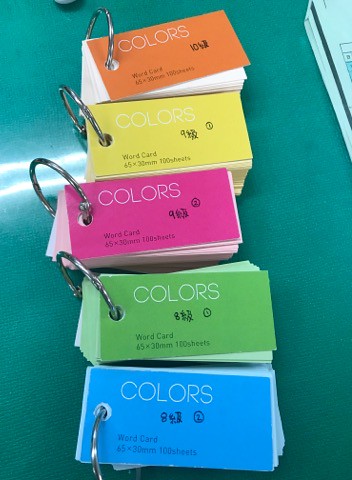By Casey Waller
When people study Japanese as a second language, the JLPT (Japanese Language Proficiency Test) is often seen as a main goal to achieve. An exam that is often overlooked is the Kanji Kentei (漢字検定). This exam is aimed at native Japanese speakers and primary school, middle school and high school students take this exam to see how their kanji knowledge is progressing. The JLPT does not test Japanese learners on their writing abilities, so the Kanji Kentei makes up for a knowledge gap that the JLPT leaves out. So, I believe that this exam is also beneficial for Japanese learners and not just native speakers.
The exam is held 3 times in the Japanese school year and is also able to be taken abroad at least once a year in some major cities. There are 12 levels in total, 1 being the highest and 10 being the lowest. In between, there are also pre-2 and pre-1 levels. On the 17th of January I sat the 8th level (8級) which is designed for primary school 3rd graders. You can find lists of kanji that you need to study for your specific level online on the official Kanji Kentei website, so I downloaded it and got to studying. The 8th level is made up of 8 sections: reading, stroke order for writing, opposites, radicals, homophones, okurigana, on and kun yomi readings, and finally kanji writing. The passing grade for this exam is 80% and you have 40mins to complete it.
I wasn’t exactly sure what to expect from this exam, but I knew that my kanji knowledge was one of my weakest abilities and I wanted to improve that. After studying my set list of 200 kanji and brushing up on the previous levels of 240 kanji total, my brain was exploding. For me, learning the readings of kanji is not as hard as learning how to write them correctly from memory. So, I really had to focus and try to improve on this area that I found so difficult.
In terms of how I studied, I bought a Kanji Kentei level 8 practice questions book from a bookstore and slowly worked my way through the questions. This book also contained 2 practice exams so I did one initially, and one before the real exam to see my progress and what still needed work. For initially learning the kanji, I bought flash cards from Daiso and made flash cards for all the kanji on the list. I also wrote a big list of all the kanji and their readings, some example words, and English meanings.
I took the exam at my main high school that I teach at and took my lower level exam among my students who were sitting higher level exams. (If you want to try for the exam, ask your co-ordinator or supervisor to help you find a venue to take the exam at.) Everyone in the room was sitting level 3 and above, while I was in the back row doing level 8. I found the exam quite easy and I was thankful that I had seemed to retain the kanji knowledge that I had studied. I won’t receive the results until mid-February, but I have confidence that I did well, especially in comparison to what my level was prior to studying for this exam. Having the pass mark up at 80% is a little daunting, but if my results are better than my original 61% mark from the practice exam, then I am thankful for any improvements!
The actual exam is relatively easy to prepare for as you can find past exams for all levels online. Doing past exams and practice questions helped me prepare for the format of the exam on the day. This also meant that there were no surprises or new types of questions as the exam is always done in the same structure. I didn’t find anything on the exam surprising or different from my practice and study, so as long as you study for the test, it’s pretty straight forward!
I feel that only focusing on the JLPT as a bar for Japanese ability is not a well-rounded approach for Japanese learners. Of course, I have also done JLPT before and I will be going for N2 in July, but I feel that it shouldn’t be our only focus! Even if you don’t do well, branching out and trying to level up skills such as speaking and writing, that the JLPT doesn’t cover, can be super beneficial for your overall ability. Doing this can often bring you much more satisfaction than just ギリギリ passing a level of the JLPT to only put it on your resume or frame it on your wall. To anyone who has been thinking of doing the Kanji Kentei, or to anyone who didn’t know about it until now, DO IT! Even if I don’t end up passing, I can read and write a lot more kanji than I could before studying for this exam, and it improved my general vocabulary along the way.
Casey Waller is from Brisbane, Australia, and is currently a 1st year SHS ALT in Yawatahama, Ehime. She loves cooking, crafts, and being with people.












Leave a Reply